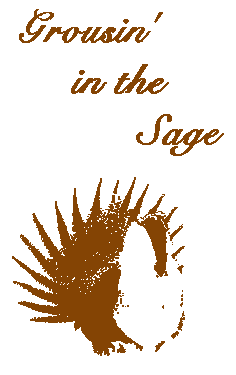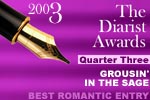






powered by SignMyGuestbook.com

| Newest
Older Previous Next Random Contact Profile Host |
blizzard warnings - 13:52 , 03 October 2013 heelerless - 21:32 , 18 August 2013 Red Coat Inn in Fort McLeod - 11:38 , 23 June 2013 rushing into the waters - 09:53 , 21 June 2013 choosing a spot - 17:43 , 27 April 2013 |
35 species
Had too much going on last month, and kinda screwed up. Only got one of my two breeding bird survey routes run, and that was probably a week later than the ideal time as it was.
A BBS route consists of 50 stops, spaced a half-mile apart, along a randomly selected public road. It is a small part of a coordinated effort to track changes in bird densities and distribution in both Canada and the USA. Been actively going on since the 1960s. Volunteers run thousands of routes every spring. If you're in either country, I'll wager someone ran a route within 30 miles of you this year.
Even in the cities.
They're always looking for more volunteers, if you're interested. Even if you don't know all your birds and their calls, they may just want someone to come along and record the data.
Or keep the coffee cup filled.
My only companions have been the heelers, but they get pretty frustrated with the non-stop stopping schedule. And this route is largely on the sheep ranch (possibility of poisons), so I ran it alone this year.
You start the route a half hour before sunrise, and record all the birds you see or hear during a 3 minute period (exactly three minutes, down to the second) at each stop.
Of course, this means you need to know all the species in the area of your route. Not just what they look like, but by song as well.
So I listen to a tape of the songs of our local species every spring, as a refresher.
Game wardens don't like riding in my truck that time of the year.
At my latitude, I'm supposed to be done ideally by 09:30, and certainly no later than 10:00. Bird song activity dies off quickly in the heat of the day, so you'd be wasting your time after that.
I just transferred my route's data to the BBS website yesterday, and then tallied the total number of species I found this year.
Thirty-five species.
That's three less than average. Probably because I waited until it was almost too late in the breeding season. And warmer than normal. Only added one new species to the route list this year�the broad-tailed hummingbird. Common enough in this country, but just never encountered one during the three-minute stops before.
It's always frustrating to see something really neat while driving between stops and not being able to record it because it wasn't there on a stop. Like bobolinks, lazuli buntings, mountain plovers and a few others.
The database says I recorded a "plumbeous vireo" in 1991. I just want to go on record that I have never recorded a "plumbeous" anything. Up until four years ago, that was a "solitary vireo." I'm okay with the recent recognition that these are three separate species, but who came up with "plumbeous" for ours?
By far, the vast majority of the birds I see or hear are members of what I call the big five:
horned lark
sage thrasher
Brewer's sparrow
vesper sparrow
sage sparrow.
The first 40 or so of the 50 stops on this route are in sagebrush, saltbush, greasewood or silver sage communities, so there isn't a lot of diversity. It's still hard to keep track of how many of these you actually hear or see at each stop. Especially the horned larks, since they tend to move around a lot, even in a three-minute period.
Sage thrashers are easy. The have an obvious, melodious song that they almost never stop singing, and they tend to stay put. And they're loud.
Brewer's sparrows have a bunch of different sounds, from buzzes to true song, but they also tend to stay put in one place.
Vespers have a simple song that almost always starts with the same two monotone notes. They move some, but when you find a bunch, they answer each other back and forth, making a count easy.
Took me a couple years to learn the sage sparrow song. They're not on my tape. Basically a simple
"turn it onnnnn, turn it off."
or "pretty biiirrrrrrd, pretty bird."
Things get challenging near the end, as the route passes through Sand Creek Canyon, with the addition of riparian shrub and willow communities, limber pine, boxelder and rocky canyons. Lots of new species. And then the Buzzard hay meadows, with the species that like open, lush fields (like the sandhill cranes and long-billed curlews that I look for every year�found them both this year. The crane had two chicks.). And, of course, the snipe.
The route I didn't run is actually quite similar, with 40 stops in open sagebrush country, and the last ten in Crooks Gap along Crooks Creek. The same "big five", only more so.
If you're interested, you can see all the data at BBS data site. If you want to look at my old data (the new stuff is still under review), check out routes 92081 and 92082. (Hey, Trinity, that's another clue.)
I still feel bad about missing route 081. Hate holes in data sets. They tend to come back to haunt you years later, and lessen the value of the data you do have.